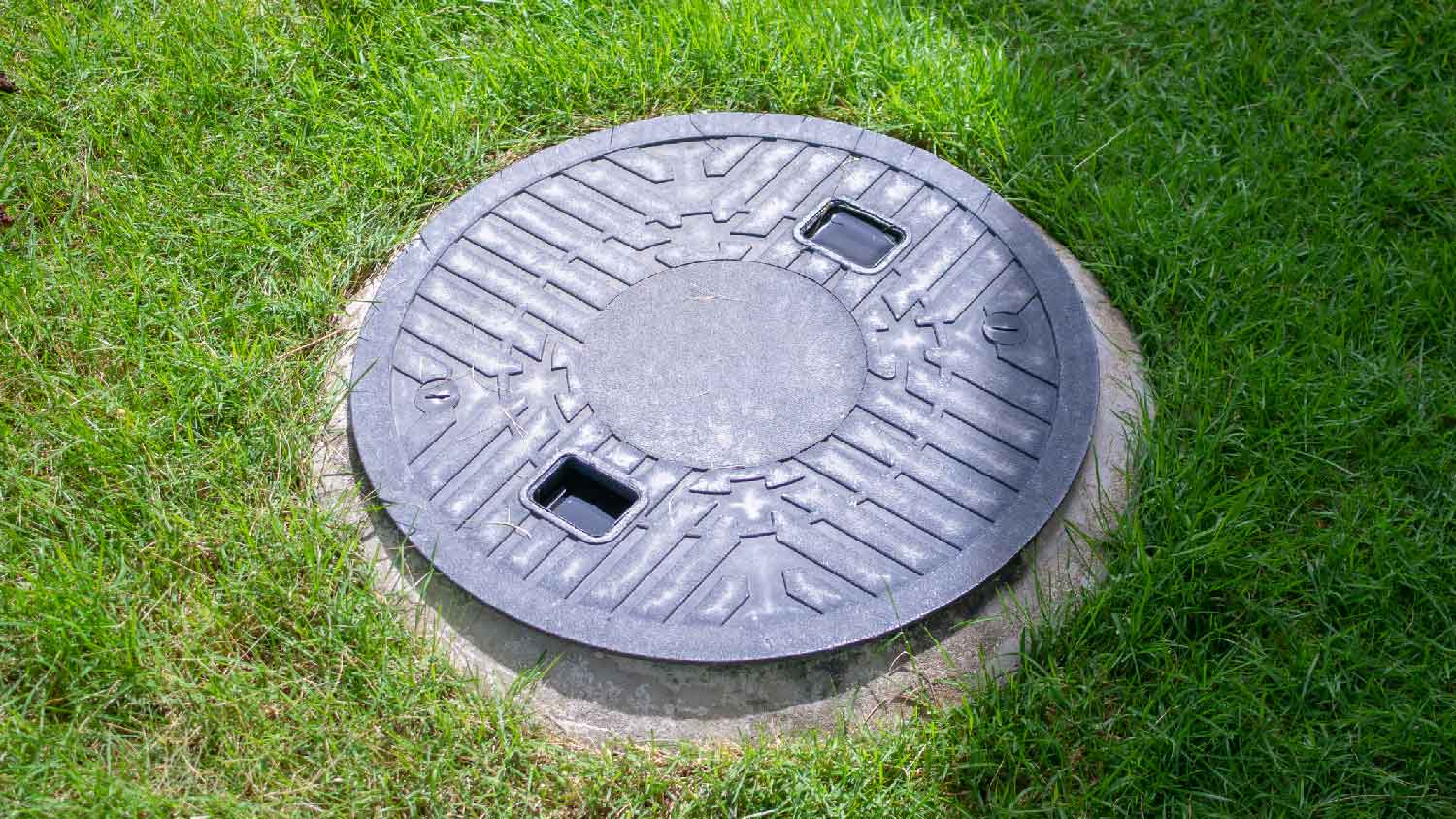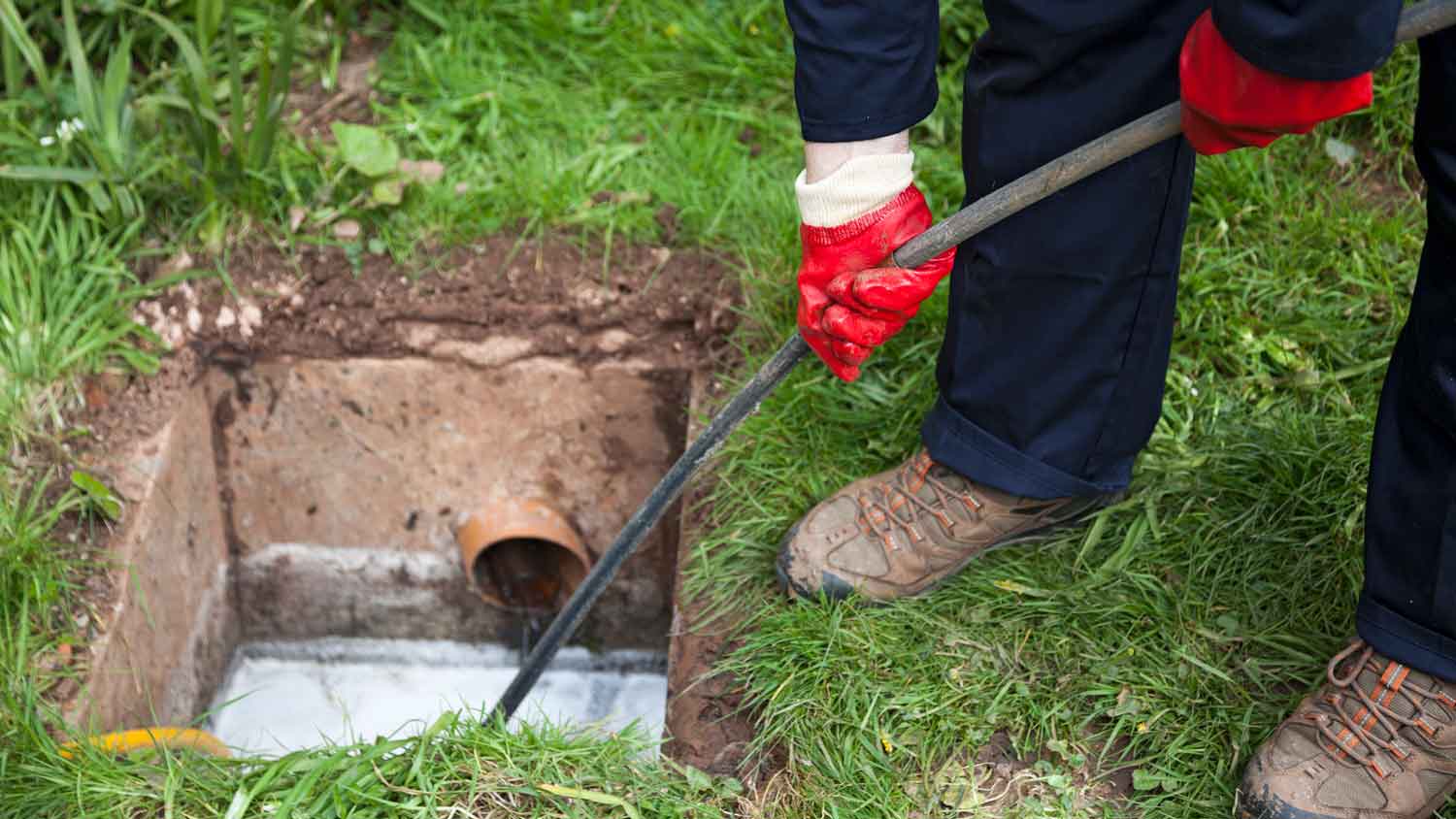
The average cost to connect to a public sewer line can vary depending on the linear foot, piping material, local regulations, and more.
Keep your home waste-free with this popular type of septic system


Anaerobic septic systems store and remove waste from your home.
They’re used in rural or suburban houses that don’t have public sewage access.
In an anaerobic system, household waste flows into a septic tank.
Anaerobic bacteria break down solid waste inside the tank.
Wastewater flows back into the soil outside through a system of pipes.
If you live in a rural area or somewhere that doesn’t have a public sewage system, you probably use a septic system to get rid of waste safely, but do you know much about how your septic system works? There are quite a few types of septic systems, with one of the most popular being the conventional anaerobic septic system. Whether you already have an anaerobic system or you’re considering installing one, here’s an overview of how they work, how they compare to other systems, and how to know if they’re right for your home.

An anaerobic septic system is a waste management system commonly used in rural and suburban homes. One of its central features is a watertight underground or above-ground septic tank, which collects waste from your sinks, showers, and toilets whenever you flush or let water run down the drain.
So, how does an anaerobic septic system work? Inside the tank, solid waste sinks to the bottom, while the liquid wastewater rises. The solid waste is broken down by anaerobic bacteria, which don’t require oxygen to live (which is where the name “anaerobic” comes from).
Wastewater, on the other hand, moves into a set of underground distribution pipes in an area known as the drain field or leach field. The wastewater slowly filters out into the soil through holes in the pipes.

Historically, anaerobic septic systems were the most common types of septic systems in the U.S. But these days, many people are choosing aerobic systems. Here are some of the differences between the two.
The main differentiator between anaerobic and aerobic septic systems is the presence of oxygen in the respective septic tanks, which impacts the type of bacteria inside.
As we’ve mentioned, anaerobic systems don’t have oxygen inside, so the bacteria that live there must be able to survive without it. But aerobic septic systems have an aerator feature that injects oxygen into the waste, where it’s broken down by aerobic (oxygen-consuming) bacteria.
Anaerobic systems aren’t as efficient as aerobic ones, so they require more piping and larger drain fields. If you don’t have a ton of space in your yard, an aerobic septic system might be a better option.
There’s also a stark price difference between the two. On average, anaerobic septic systems cost anywhere from $3,000 to $8,000, while aerobic systems are much pricier, costing between $10,000 and $20,000. Something else to keep in mind: The aerator in an aerobic septic system needs power to run, which can increase your operating costs.
If your home isn’t connected to the public sewer system, then you’ll likely use a septic system—but is an anaerobic system the right choice for your needs? Here are some pros and cons to consider.
On the plus side, anaerobic systems are usually more affordable than other types of septic systems, including aerobic, mound, and drip distribution systems. Unlike some other systems, they don’t need electrical power to run, which makes them more efficient and better for your wallet.
There are some potential drawbacks, as well. Anaerobic systems take up more space than some other kinds of septic systems because their pipes are designed to evenly distribute wastewater throughout the soil. So, if your property is small, an anaerobic septic system is not be the best choice for you.
Also, not every yard is suitable for an anaerobic septic system. If you’re considering an anaerobic system, your soil has to allow for quick percolation, or the process of treated wastewater absorbing into the soil. You need to hire a pro to do a perc test on your yard to check its percolation rate.
Septic systems play a critical role in your home by safely disposing of water and waste. To keep your system running smoothly (and avoid potentially pricey septic tank repairs), it’s important to take proper care of it. Here are a few tips to keep in mind.
Know what you can (and can’t) put into your septic system: Dealing with clogged toilets and backed-up drains is never fun. To prevent these types of problems, don’t put things like chemicals, paper towels, baby wipes, or personal hygiene products into your system. Basically, the only things that should go down your toilet are septic-safe toilet paper and human waste.
Pump your septic tank: Every three to five years, you should hire a plumber or septic tank pro to pump your septic tank. Regular pumping can help prevent waste from building up inside your tank, leaking out into your drain field, and backing up your pipes. Typically, a one-time septic tank pump costs around $400.
Look after your drain field: Keep your drain field free of any obstructions in case problems arise and a pro needs to access it. Also, keep all roof drains and downspouts pointed away from the field; otherwise, the field could soak up too much water and overflow.
Know when to call a pro: It’s best to have a professional septic inspection every few years. But you should also call a local septic tank company any time something seems off. Common signs of a septic system problem include backed-up plumbing, slow drainage, foul odors, and standing water in your drain field.
From average costs to expert advice, get all the answers you need to get your job done.

The average cost to connect to a public sewer line can vary depending on the linear foot, piping material, local regulations, and more.

Does your property have poor ground water or soil conditions? Learn about engineered septic system cost, types, and factors for you to consider.

If it’s been there for a while, it can be hard to find the septic tank in your yard. Learn how much it costs to locate a septic tank with this guide.

An unpleasant smell in your house may signal that your sewer main needs to be cleaned. Ask your plumber these sewer questions before the scent gets worse.

A perc test for septic analyzes the absorption rate of the soil where a tank is going to be installed. Learn more about the test, cost, and passing grades.

A mound septic system is similar to a traditional system, except the drain field is built into a mound and not hidden underneath your yard.